Updated Tables with Average Earnings by Age, Gender, and Industry
Research & Planning (R&P) recently updated a series of tables on its Wyoming Labor Market Information website. These updated tables show revised annual earnings by age and gender for 2006 and preliminary data for 2007. Earnings figures and industry classifications are based on Wyoming Unemployment Insurance (UI) wage records and represent a count of individuals who worked in the state at any time during the year. Each person is represented one time, regardless of the number of jobs he or she worked. Average wages are the average annual wages of those individuals who worked in a UI-covered job during the reference year. They reflect pretax earnings and in many cases are identical to wages as reported on the IRS 1040 forms.
The update of tables showing annual earnings by age and gender in Wyoming reveals several trends:
The number of workers for whom demographics are unknown continues to rise. A lack of demographic information often indicates nonresident status, illustrating the fact that Wyoming employers continue to rely on large numbers of workers from other states.
The workforce continues to age rather markedly, as demonstrated by further growth in the oldest age groups.
The difference in earnings between men and women decreased, in 2007, for the first time in four years.
One of the important pieces of information in the tables is the continued increase in the number of workers for whom we have no demographic information in any of our administrative databases (Driverís License, UI claims, etc.). As shown in Figure 1, the percentage of people for whom demographics are unknown increased dramatically from 2000 to 2007. In 2000 only 11.3% of the total workforce lacked known demographics. By 2007 this number increased to 22.7%. The increases were highest in construction (45.1%) and leisure & hospitality (38.4%). The absence of demographics is most often associated with nonresident status (Jones, 2006).
Another important note is the increase in the number of workers age 45 and older (see Figure 2). In 2000, 88,671 workers (28.8% of the workforce) were in this age range. The number rose to 116,306 (31.3%) in 2007. The aging phenomenon is most apparent in educational services. Figure 3 shows the distribution of Wyoming workers in the state as a whole and in educational services in 2007. Statewide, 40.5% of workers with known demographics were age 45 and older. In educational services, however, 56.0% of workers were age 45 and older. It is likely our high school and college systems will see increasing pressure to educate more qualified teachers during the next 10 to 15 years as large numbers – and a significant proportion – of educators reach traditional retirement age.
For the first time in several years, the gap between earnings for men and women narrowed (see Figure 4). In 2006, women earned, on average, 55.4% of what men earned. The percentage rose to 56.4% in 2007. During both years the percentage was substantially higher than in 2000, when women earned just 53.8% of menís earnings. The Table shows the percentages of womenís earnings relative to menís for each industry. Health care & social assistance had the largest wage gap with women making 44.0% of male earnings. Public administration and educational services had the smallest gaps (75.8% and 75.7%, respectively).
ReferencesJones, S.D. (2006). States of origin for Wyoming workers. Wyoming Labor Force Trends, 43(4). Retrieved July 31, 2008, from http://doe.state.wy.us/LMI/0406/a1.htm
Return to text
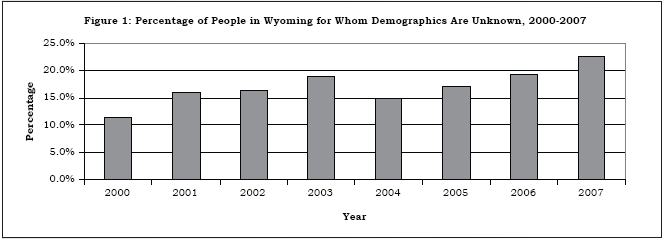
Return to text
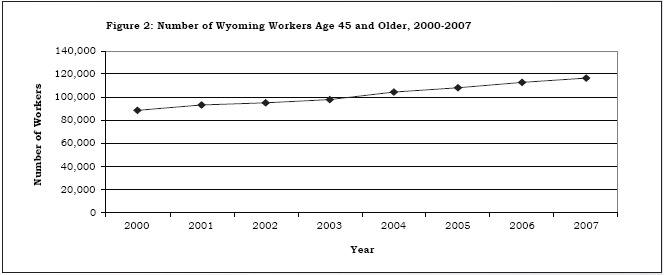
Return to text
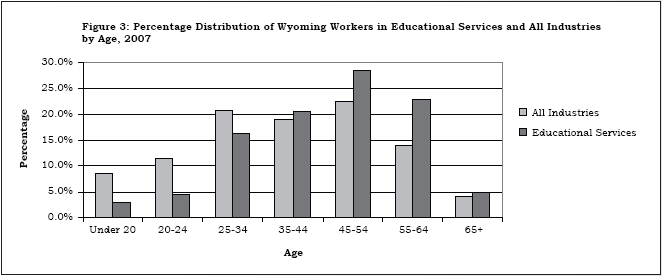
Return to text
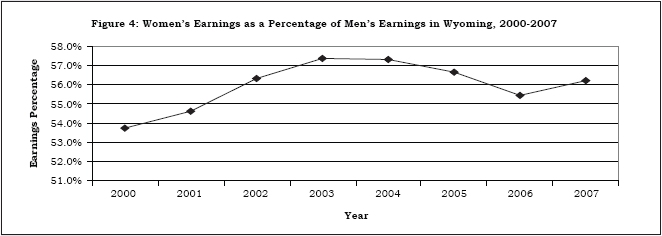
Return to text
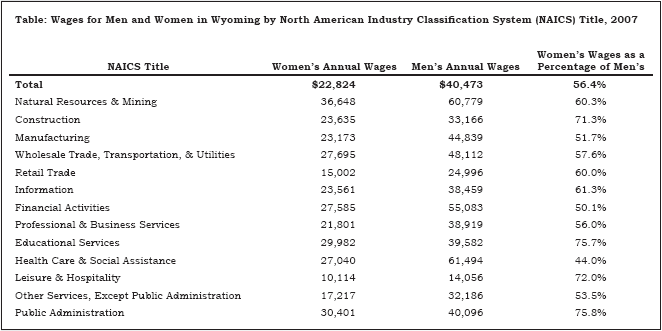
Last modified on
by April Szuch.
